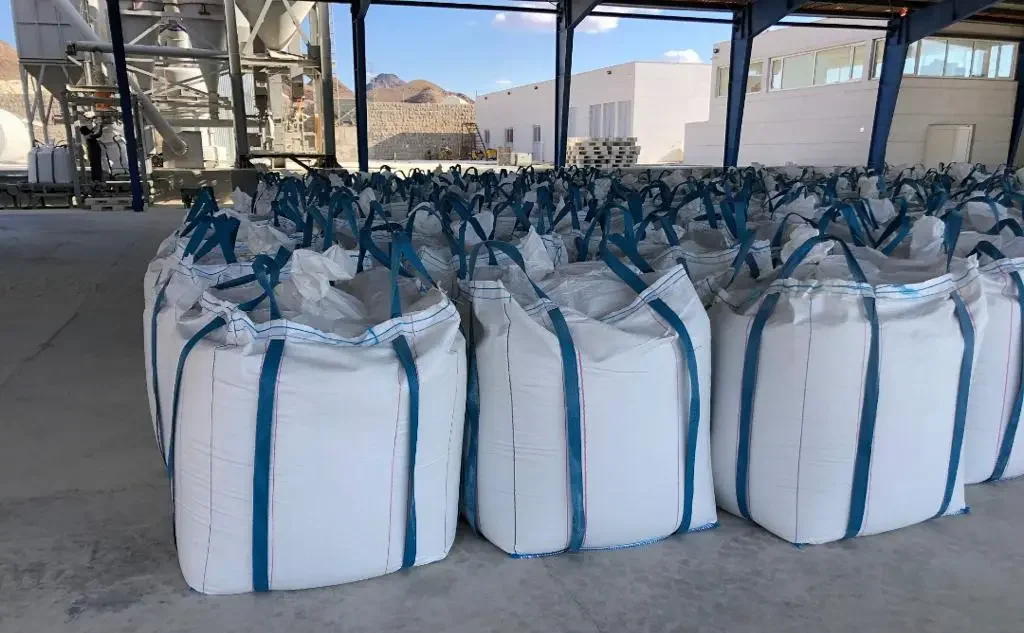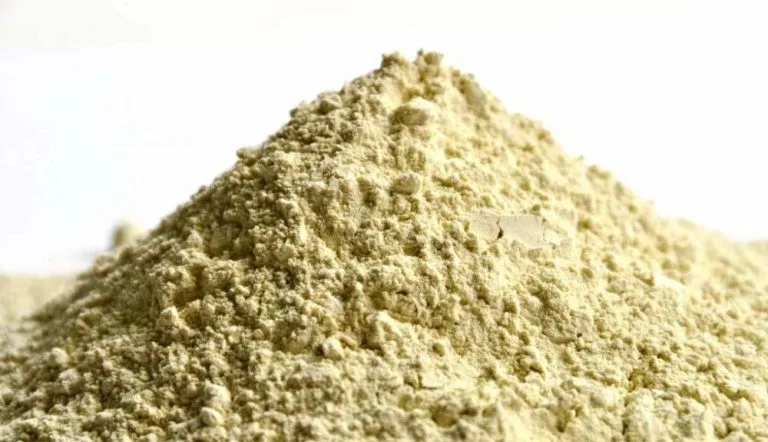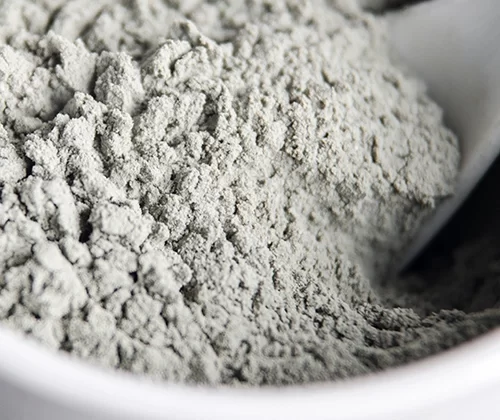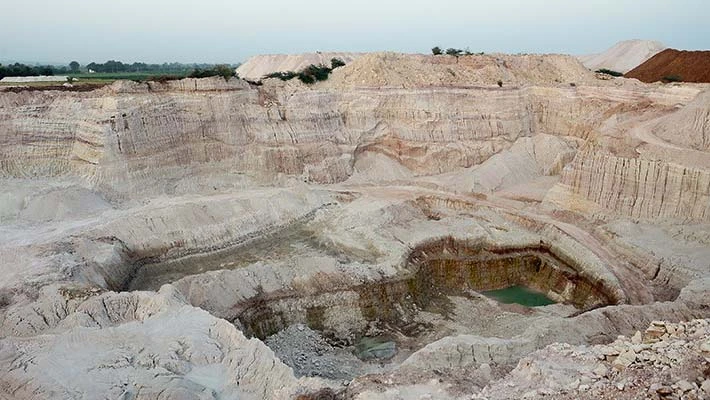 Bentonite
Bentonite
WHAT IS BENTONITE?
Bentonite utilizes montmorillonite as its primary mineral component, making it a key non-metallic refractory raw material. The choice of montmorillonite is based on its status as the predominant mineral in non-metallic refractory materials, commonly recognized as a source for extracting rocks. With montmorillonite constituting 85-90% of its mineral composition, bentonite’s characteristics are largely influenced by this component. The mineral can exhibit various colors, including yellow, green, gray, and white. Bentonite can manifest as dense patches and is suitable for use in loose soil, providing a distinct slippery sensation when manually ground. Moreover, its water-absorption properties are noteworthy, with a significant volume increase of 20-30 times when exposed to water, forming a suspension in abundant water and a paste in minimal water.
BENTONITE, ITS PROPERTIES AND APPLICATIONS
Bentonite is an adsorbent with aluminum phyllosilicate clay structure, most of which is composed of the “montmorillonite” mineral. This mineral is one of the first geological finds in the Benton Shale, a remnant of the Cretaceous geological period, near Rock River, Wyoming. There are different types of bentonite, which are named according to one of the predominant elements in it; For example, potassium (K), sodium (Na), calcium (Ca) and aluminum (Al). Experts believe that these mineral compounds are almost similar to the mineral clay classification and all of them can cause respiratory problems for humans. Montmorillonite Clay ore is usually formed by the weathering of volcanic ash, often in the presence of water. However, the term bentonite is often used to describe clayey beds of uncertain origin. This mineral composition is divided into two ranks or grades for industrial applications; Sodium and calcium bentonite.
WHAT IS BENTONITE?
Bentonite is a clay mineral that is often produced from changes in volcanic ash and mainly contains the minerals smectite and montmorillonite. Other minerals of the smectite group include hectorite, saponite, beidelite and nontronite. Smectites are Russian minerals; They are composed of single crystallites, most of which are at least 2 µm in greatest dimension. Smectite crystallites, themselves, are three-layered clay minerals. They consist of two quadrilateral layers and an octagonal layer. Silicate-containing layers have a slight negative charge, which is neutralized by exchangeable ions in the intercrystallite region. This amount of negative charge is so weak that cations (normally mainly Ca2+, Mg2+ or Na+ ions) can be absorbed in this region. The degree of hydration causes an intercrystalline swelling. Montmorillonite Clay types, depending on the nature of origin and formation, in addition to montmorillonite, also have various side minerals. These minerals may include quartz, feldspar, calcite, and gypsum. The presence of these minerals can affect the industrial value of a deposit and increase or decrease its value depending on its applications. Montmorillonite Clay has strong colloidal properties and when it comes into contact with water, its volume increases several times, creating a gelatinous and viscous liquid. The specific properties of Montmorillonite Clay (hydration, swelling, water absorption, viscosity) have made it a valuable material for a wide range of industries.
BENTONITE VARIETIES
 Bentonite Powder
Bentonite Powder
Bentonite comes in various types, each suited for different industries. It finds significant use in drilling, constituting a major portion of our exports. A common trait across all types is its high water absorption and inflation capacity. Our company offers two standard types, swelling and non-swelling, conforming to API and OCMA standards. Common types of Montmorillonite Clay include:
- Sodium bentonite
- Calcium bentonite
- Magnesium bentonite
- Potassium bentonite
HISTORY OF BENTONITE
The term bentonite was first found around 1890 in volcanic tuff (= Cretaceous remains) near Fort Benton, Montana. The main ingredient of this composition is the clay mineral montmorillonite. This combination takes its name from Montmorillon, a place in the south of France.
APPLICATIONS OF BENTONITE
Bentonite, a versatile mineral, finds widespread utility across various industries due to its cost-effectiveness, making it a viable alternative to diatomite. Its applications include oil well drilling, earth wells, detergent production, color hiding, oil refining, fabric softeners, pet care, water treatment, oil absorption, sewage treatment, dam construction, soil sustainability, pet food enrichment, pharmaceuticals, and numerous other fields.”
1- The use of bentonite in casting: Montmorillonite Clay is used as a binding material in the preparation of casting sand in the production process, in the casting of iron, steel and non-ferrous metals. The unique properties of this mineral composition cause the production of sand molds with the ability of fluid flow, proper compression and thermal stability, in the high quality casting process.
2- Animal bentonite for preparing cat litter: This mineral composition is used to prepare the place where cats are kept. It can be used in pet bedding because it has the advantages of absorbing cat or other pet litter. For this application, bentonite with a grain size of 5 to 6 mm or a finer grain size of 1 to 3 mm is used.
3- Bentonite in pelletizing: Bentonite is used as a binder in the production of iron ore pellets. Through this process, lumps of iron ore are transformed into spherical balls; The pellet is suitable as the main feed in blast furnaces for iron production, or in direct reduction iron production (DRI).
4- bentonite in construction and civil engineering: Sodium Montmorillonite Clay is especially used for civil engineering and construction applications. This material can swell in contact with water and has some kind of sealing properties. This combination is used for foundation of dams, tunneling, horizontal excavations, connecting pipes, etc. Due to its viscosity and plasticity, it is also used in Portland cement and building mortar.
5- Bentonite in treatment plants: The adsorption properties in this mineral composition are very useful for wastewater treatment. This compound is used for sealing in landfill construction and remediation to ensure that groundwater is protected from contaminants.
6- Drilling bentonite: Another common use of Montmorillonite Clay is as a component of drilling mud for oil and water wells. Its role is mainly to seal the walls of the well and lubricate the drill head during cutting. This material can strengthen the walls of weaker wells. Bentonite absorption rate suitable for oil well drilling is 500-600.
7- Edible bentonite: The edible grade of this composition is used to remove impurities from common edible oils. Its absorption property is very important in the processing of edible oils and fats (soybean oil/palm oil/canola oil). In some industrial drinks and mineral water and in products such as sugar or honey, bentonite is used as a clarifying agent. In some cereal flours, this substance is used as a product texture improver.
8- Agricultural bentonite: Agricultural Montmorillonite Clay is used as an animal feed supplement, to help pelletizing in the production of animal feed pellets. It is also used as an ion exchanger to improve and condition the soil. If heat treated, it can be used as a porous carrier for a variety of herbicides and pesticides. The appropriate absorption rate for agricultural bentonite is 350-450.
9- Bentonite in medicines and cosmetics and medical products: Bentonite is used as a filler in some medicines. Due to the better absorption functions, it allows the formation of a uniform paste. Such applications include skin protective creams, lotions, moist compresses, and antiallergic creams for skin eczema. In medicine, this mineral compound is used as an antidote in heavy metal poisoning. Personal care products such as sunscreens, body and face powders, and face creams may all contain some percentage of Montmorillonite Clay.
10- Detergent bentonite: Detergents and liquid hand cleaners, soaps and some detergents contain amounts of this compound in order to remove existing impurities. Removing pollution from surfaces and softening fabrics somehow relies on the presence of Montmorillonite Clay in these products.
11- Application in colors and pigments: Bentonite and organic clay, due to their swelling and thickening properties, are used as thickeners or suspensions in water-based varnishes and paints. The absorption properties of this fiber dyeing composition can also be used.
12- Application in paper making: Bentonite is very important for the paper industry. This compound can remove resins that lead to clogging of machinery parts. This combination is used to improve the efficiency of converting pulp to paper and also to improve the quality of paper.
13- Use in catalyst production: Catalysts modified with clay are used in a wide range of analytical and synthetic applications whose main mechanism is acid. It is especially used in alkylation processes to produce fuel additives.
USAGE OF BENTONITE
BENTONITE STORAGE CONDITIONS
- The warehouse where bentonite is stored must have proper ventilation.
- Avoid placing the packages of this composition near or in contact with moisture.
- Keep containers or bags of this compound tightly closed in a dry, cool and well-ventilated place.
- This compound is stable and no specific hazards have been recorded for it in terms of reactivity.
- This mineral composition is very sensitive in contact with moisture.
- Avoid storing bentonite bags in the vicinity of strong oxidizing agents and strong acids.
- In case of decomposition, hazardous products are not produced under normal conditions.
BENTONITE PACKAGING
Bentonite is generally sold in 25 kg, 30 kg, 50 kg or 1000 kg jumbo bags. It is also possible to transport this mixture in bulk with mineral transport machines. We assure the sale and delivery of all types of bentonite worldwide, tailored to customer requirements. Our packaging options range from 15 kg bags on wooden pallets to 1-ton jumbo bags, ensuring ease of transfer and safe shipment. We welcome inquiries from any global location and are prepared to fulfill orders with various packing specifications.”
TECHNICAL DATA SHEET OF BENTONITE POWDER FOR DRILLING (OCMA)
| Requirements | Unit | Specification |
|---|---|---|
| Viscometer dial reading at 600 rpm | - | Min30 |
| Plastic viscosity | - | Min 5 |
| Ratio (Yield Point/Plastic viscosity) | - | Max6 |
| Residue of diameter greater than 200 mesh | % | Max6 |
| Moisture | % | Max 12 |
TECHNICAL DATA SHEET OF BENTONITE POWDER FOR DRILLING
| Requirements | Unit | Specification |
|---|---|---|
| Viscometer dial reading at 600 rpm | - | Min 40 |
| Plastic viscosity | - | Min 5 |
| Residue of diameter greater than 200 mesh | % | Max 3 |
| Moisture | % | Max 12 |
TECHNICAL DATA SHEET OF BENTONITE POWDER FOR DRILLING
Grade: API 13
| Requirements | Unit | Specification |
|---|---|---|
| Viscometer dial reading at 600 rpm | - | Min 30 |
| Plastic viscosity | - | Min 6 |
| Ratio (Yield Point/Plastic Viscosity) | - | Max 3 |
| Residue of diameter greater than 200 mesh | % | Max 4 |
| Moisture | % | Max 12 |

 Bentonite clay
Bentonite clay Bentonite mine
Bentonite mine